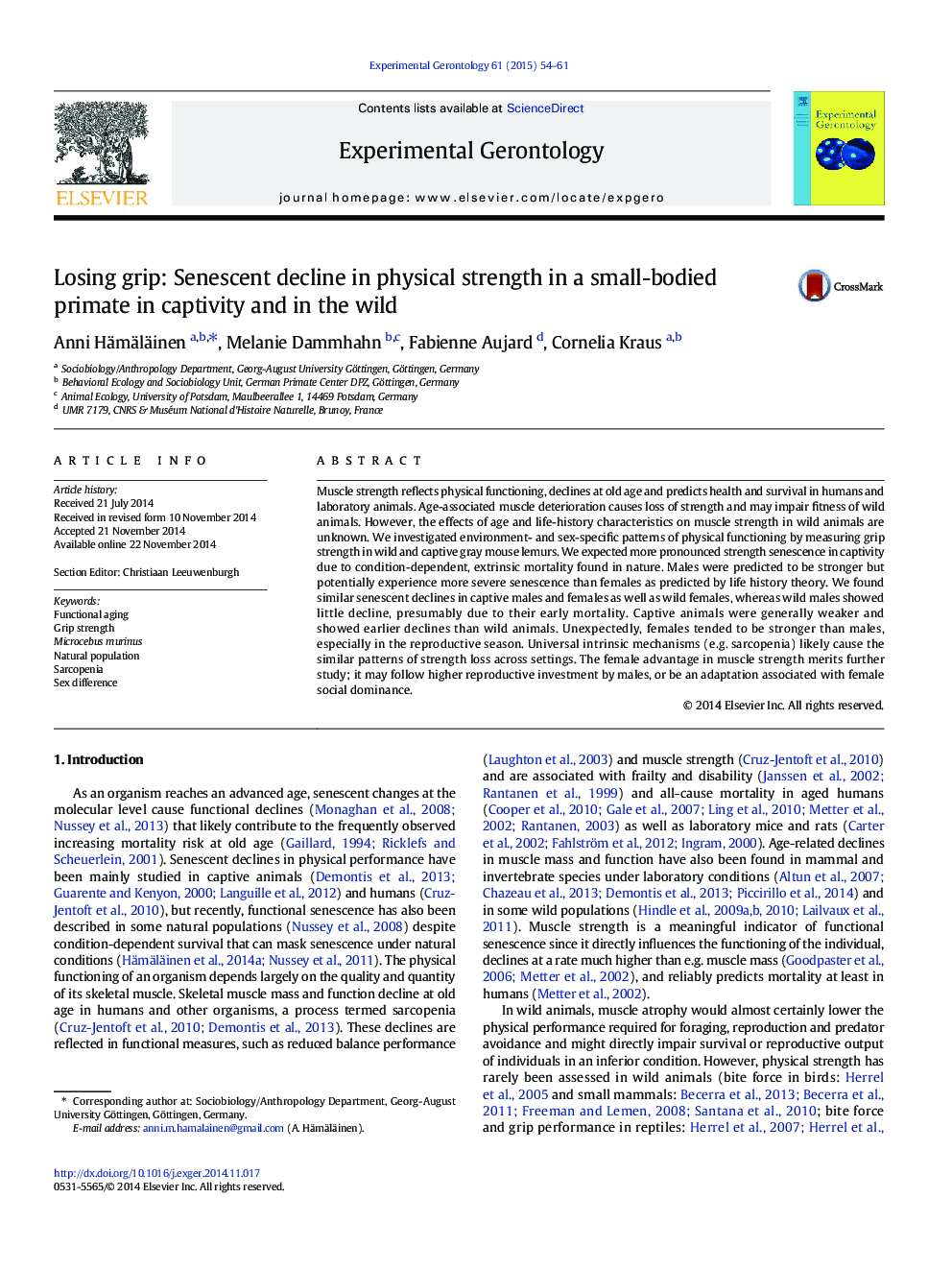| Article ID | Journal | Published Year | Pages | File Type |
|---|---|---|---|---|
| 1906209 | Experimental Gerontology | 2015 | 8 Pages |
•Functional senescence was studied in wild and captive gray mouse lemurs.•Similar declines in physical strength across settings suggest sarcopenia.•Grip strength started to decline at an earlier age in captivity.•Physical strength declined similarly in both sexes.•Unlike in all other species studied, females tended to be stronger than males.
Muscle strength reflects physical functioning, declines at old age and predicts health and survival in humans and laboratory animals. Age-associated muscle deterioration causes loss of strength and may impair fitness of wild animals. However, the effects of age and life-history characteristics on muscle strength in wild animals are unknown. We investigated environment- and sex-specific patterns of physical functioning by measuring grip strength in wild and captive gray mouse lemurs. We expected more pronounced strength senescence in captivity due to condition-dependent, extrinsic mortality found in nature. Males were predicted to be stronger but potentially experience more severe senescence than females as predicted by life history theory. We found similar senescent declines in captive males and females as well as wild females, whereas wild males showed little decline, presumably due to their early mortality. Captive animals were generally weaker and showed earlier declines than wild animals. Unexpectedly, females tended to be stronger than males, especially in the reproductive season. Universal intrinsic mechanisms (e.g. sarcopenia) likely cause the similar patterns of strength loss across settings. The female advantage in muscle strength merits further study; it may follow higher reproductive investment by males, or be an adaptation associated with female social dominance.
